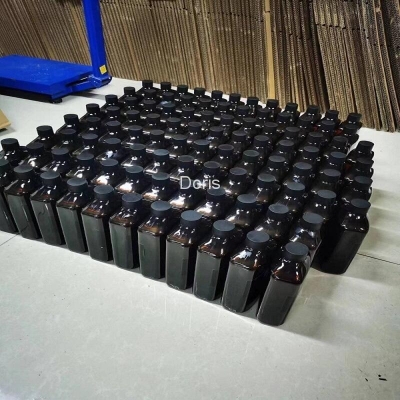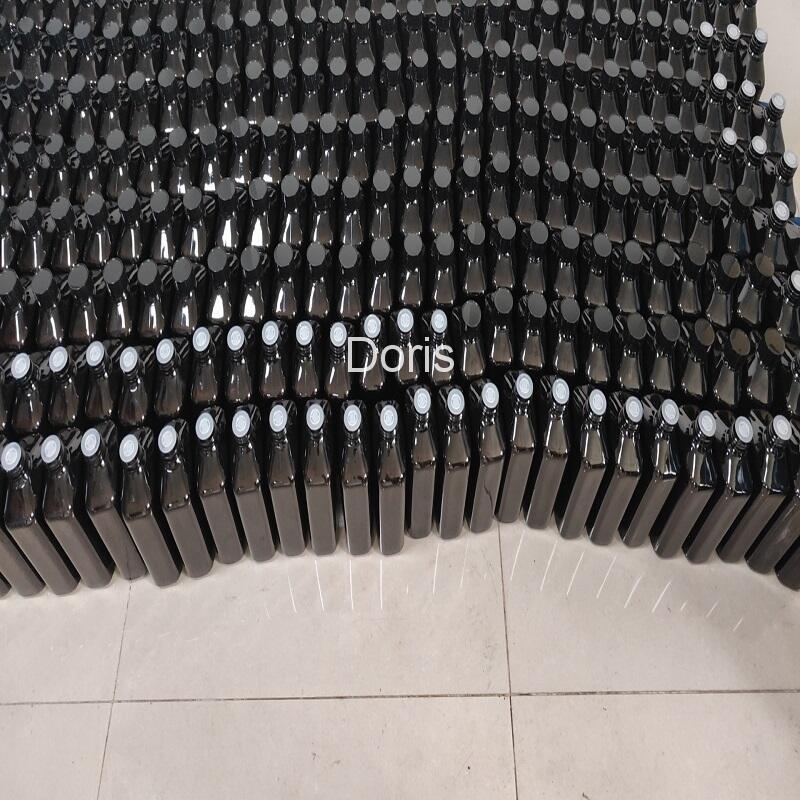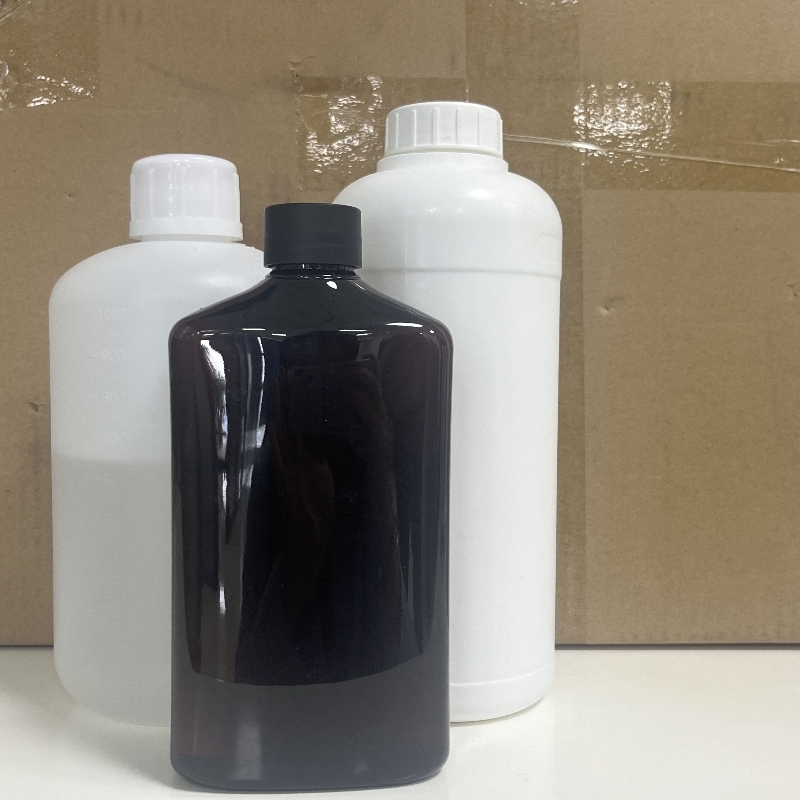-
Categories
-
Pharmaceutical Intermediates
-
Active Pharmaceutical Ingredients
-
Food Additives
- Industrial Coatings
- Agrochemicals
- Dyes and Pigments
- Surfactant
- Flavors and Fragrances
- Chemical Reagents
- Catalyst and Auxiliary
- Natural Products
- Inorganic Chemistry
-
Organic Chemistry
-
Biochemical Engineering
- Analytical Chemistry
- Cosmetic Ingredient
-
Pharmaceutical Intermediates
Promotion
ECHEMI Mall
Wholesale
Weekly Price
Exhibition
News
-
Trade Service
Liver fibrosis is the leading response of hepatitis, cirrhosis, liver cancer and other diseases.
It is the healing process of liver damage caused by viral infection, inflammation, high-fat diet, excessive drinking, and autoimmune diseases.
It is characterized by collagen deposition and The accumulation of extracellular matrix
.
Liver fibrosis can lead to the atrophy of normal liver structure and liver cells, leading to liver failure, eventually leading to liver necrosis and even patient death.
Natural products are endogenous chemical components in organisms such as plants, animals, and microorganisms
.
The anti-hepatic fibrosis mechanisms of natural products include inhibition of liver inflammation, anti-lipid peroxidation damage, regulation of the synthesis and secretion of pro-fibrotic factors, regulation of the synthesis and degradation of extracellular matrix, and inhibition of the activation and proliferation of hematopoietic stem cells
The natural products of anti-oxidative stress to improve liver fibrosis include flavonoids, terpenoids, alkaloids and polyphenols
.
Flavonoids
Baicalein is a kind of flavonoids extracted from the root of Scutellaria baicalensis Georgi.
It has anti-virus, anti-inflammatory, scavenging free radicals and inducing apoptosis of liver cancer cells
.
The tail vein injection of baicalein into the liver fibrosis model rats induced by nitrosamines showed that baicalein has ameliorating effect on liver fibrosis
Galangin is a flavonol extracted from galangal
.
After 12 weeks of intragastric administration of galangin in carbon tetrachloride-induced liver fibrosis model rats, it was found that the model rats had hyaluronic acid, cohesive protein, total serum protein, albumin, alanine aminotransferase and aspartame.
Silymarin is a mixture of flavonoids extracted from Silybum marianum, including silymarin, isosilymarin and silicone
.
Milk thistle is often used to treat liver, spleen and gallbladder diseases, and is widely used in the treatment of liver diseases
Schisandrin is a flavonoid compound extracted from Schisandra
.
After 4 weeks of intragastric administration of schisandrin in rats with liver fibrosis, it was found that schisandrin can reduce the production of ROS and the level of malondialdehyde in rats, restore glutathione consumption, increase the activity of antioxidant enzymes, and protect Protect the liver from damage
Terpenoids
Glycyrrhizin, glycyrrhetinic acid glycyrrhizin and glycyrrhetinic acid are the main terpenoid active ingredients extracted from licorice root
.
Glycyrrhetinic acid can significantly reduce the levels of serum monoamine oxidase and malondialdehyde in mice and increase the expression of Nrf2, indicating that glycyrrhetinic acid can improve liver fibrosis
Astragaloside IV is an active ingredient extracted from Astragalus membranaceus, which has anti-liver fibrosis and antioxidant potential
.
After injecting astragaloside IV into liver fibrosis model rats, it was found that it can reduce lipid peroxidation levels in rats, increase glutathione levels and stimulate the body's immune response
Ursolic acid is a natural pentacyclic triterpenoid compound extracted from loquat leaves.
It has a variety of biological activities such as antioxidant and anti-inflammatory
.
Ursolic acid (25, 50 mg/kg) was intragastrically administered to carbon tetrachloride-induced liver fibrosis model mice after 6 weeks and found that it can inhibit the increase in ROS levels and the increase in liver tissues by regulating the Nrf2-ARE pathway.
Inflammatory response
.
Andrographolide is a diterpenoid compound isolated from Andrographis paniculata.
It has anti-inflammatory, anti-platelet aggregation and anti-tumor biological activities
.
The study found that andrographolide (20, 40mg/kg) gavage acetaminophen-induced liver collagen deposition model mice for 4 weeks, can reduce the generation of ROS in the liver tissue of the model mice, and can up-regulate the expression of Nrf2, thereby Increase the expression of its downstream genes, thereby improving liver fibrosis in mice
.
Another study found that for thioacetamide-induced mouse liver fibrosis model rats gavage andrographolide, andrographolide can up-regulate the activity of antioxidant response kinase and down-regulate the α-smooth muscle actin in liver tissue.
Pro-fibrosis effect transforming growth factor to improve liver fibrosis
.
Geniposide is an iridoid glycoside extracted from the fruit of Gardenia jasminoides.
It has the effect of improving hyperlipidemia and fatty liver
.
Studies have found that 50 and 100 mg/kg geniposide can reduce the free fatty acid content and enhance endogenous antioxidant enzymes in rats with non-alcoholic fatty liver induced by high-fat diet for 6 weeks.
The activity of geniposide reduces the level of malondialdehyde and protects rat liver cells from oxidative damage.
The ability of geniposide to improve liver fibrosis is related to the reduction of the formation of free radicals and the enhancement of free radical scavenging ability
.
In addition, geniposide can also play its role in protecting the liver by reducing the level of alkaline phosphatase
.
Another study found that after carbon tetrachloride-induced liver fibrosis model mice were given geniposide, the level of glutathione in the mice increased, and the activities of superoxide dismutase and catalase increased
.
(To be completed, to be the next part)
Reference
[1] Li Gui, Dong Songtao, Dong Zhanjun.
Research overview of natural products for improving liver fibrosis based on anti-oxidative stress[J].
Chinese Pharmacy, 2019, 30(19).
[2]Xiao Zhiyong, Wang Xiaolin.
Progress in the treatment of liver fibrosis with nanoparticles and natural products[J].
Electronic Journal of Integrated Traditional Chinese and Western Medicine Cardiovascular Diseases, 2020, v.
8(36):36-37.
About the author: Michong, a drug quality researcher, has been committed to drug quality research and drug analysis method verification for a long time.
Now he works in a large domestic drug research and development company, engaged in drug inspection analysis and analysis method verification
.







